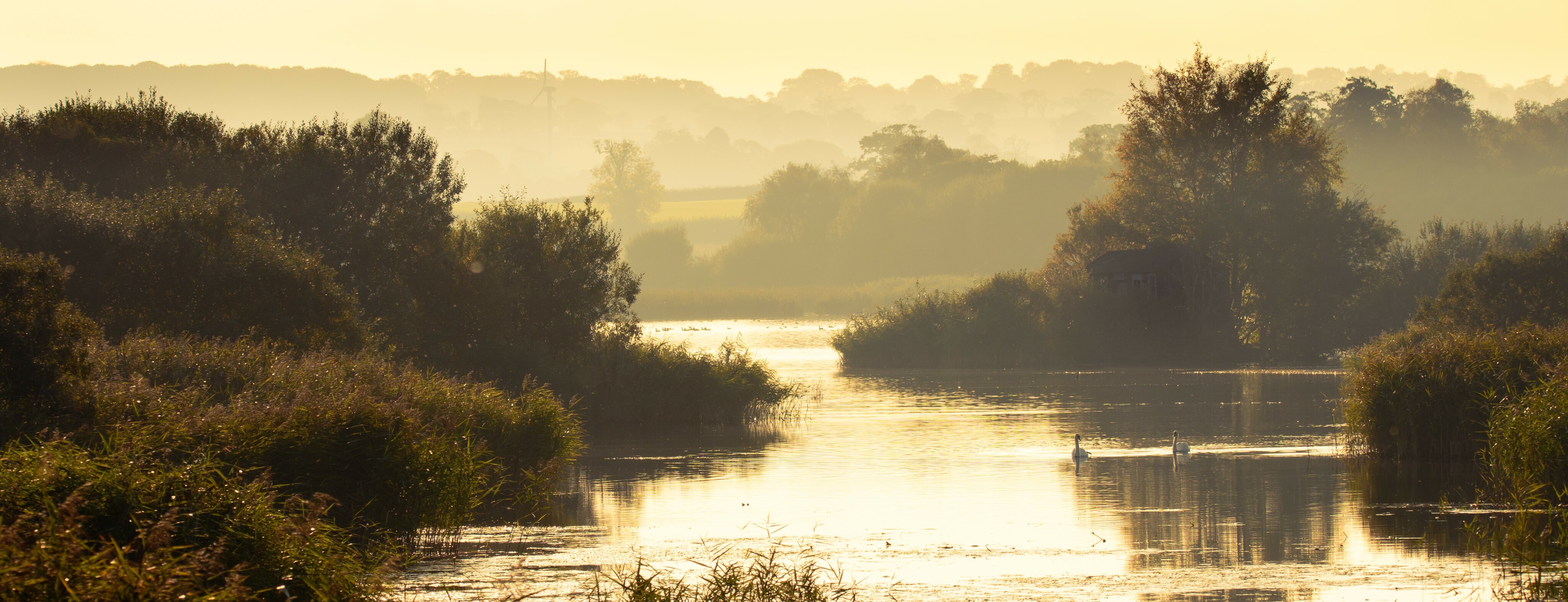
February 2024
Building resilience into our landscapes and recovering nature in the UK is a huge job facing society and we need all the tools and skills available to us. In a spectrum of approaches, from nature-friendly farming practices through to rewilding, we have the opportunity to think and manage land differently to provide a range of public benefits. Rewilding has captured the imagination of many who are passionate about nature’s recovery and there is emerging evidence of the nature benefits, for example the recovery of nightingales and purple emperor butterflies at Knepp. However, climate change brings further challenges and how much do we know about how rewilding might help with manging floods and droughts, often described as the sharp end of climate change?
Our review of evidence published this month has indicated that rewilding could help with flood and to a lesser extent, drought resilience, but we need to continue to gather more data. The study found that research directly exploring the movement of water through rewilded landscapes is sparse, but assessing similar types of landcover change can provide useful indicators. The evidence for rewilding impacts on floods largely suggests reduced flood magnitudes, albeit to varying degrees. In contrast, low flow impacts were more complex but conclusions were only based on a very small number of studies so should be treated with caution. Low flow impacts include some risks of increased water stress for certain types of ecosystem change (e.g. woodland expansion) combined with alleviation of low flow stresses for others (e.g. beaver reintroduction).
We found that the different ecosystem changes driven by rewilding were generally addressed in separate studies. But in practice rewilding drives multiple interacting ecosystem changes in the same location. It is important that rewilding monitoring and future research considers the combined influence of changing animal and plant communities on the way water moves though rewilded landscapes. The study also identified a lack of research on the scrubland habitats that are characteristic of natural vegetation regeneration in lowland temperate rewilding projects. This is an area where there is a significant opportunity to gather data to improve understanding as the number of rewilding projects expands.
The economic costs of floods and droughts are vast, requiring yearly government funding of £millions to £billions in England alone. There is significant momentum behind more cost-effective nature-based solutions, including natural flood management and rewilding, that work with natural processes to simultaneously reduce risks of environmental hazards, increase biodiversity and bring social and cultural benefits for individuals and communities. Rewilding has a key role to play in this arena, with the potential to deliver large scale and dramatic changes in plant and animal communities that in turn influence the movement of water through landscapes.
Understanding the likely impacts of land use changes to rewilding or more nature-friendly farming practices is key to mainstreaming nature-based solutions to climate change. The better we can quantify and articulate the range of benefits, whether water related, carbon or biodiversity, the more likely these nature-based solutions are likely to become the default and the more likely we will see a range of actors investing in them. The research highlights a pressing need for monitoring and analysis of the impact of rewilding on the flows of water through river catchments. This should include simultaneous consideration of floods and droughts, which may be impacted by rewilding-driven ecosystem changes in different ways.
Notes:
The research was funded by UKRI through the NERC/ ESRC Synthesising evidence in economics of biodiversity programme. It was led by researchers at Queen Mary University of London in collaboration with the University of Sussex, Environment Agency, National Trust, Rewilding Britain and Wildfowl and Wetlands Trust and synthesised the outcomes from over 100 published studies.
The published article can be found here.
Gemma Harvey is Professor in Physical Geography at Queen Mary, University of London. Stewart Clarke is the National Specialist for Freshwater & Catchments at the National Trust.
The opinions expressed in this blog are the authors' and not necessarily those of the wider Link membership.


Latest Blog Posts